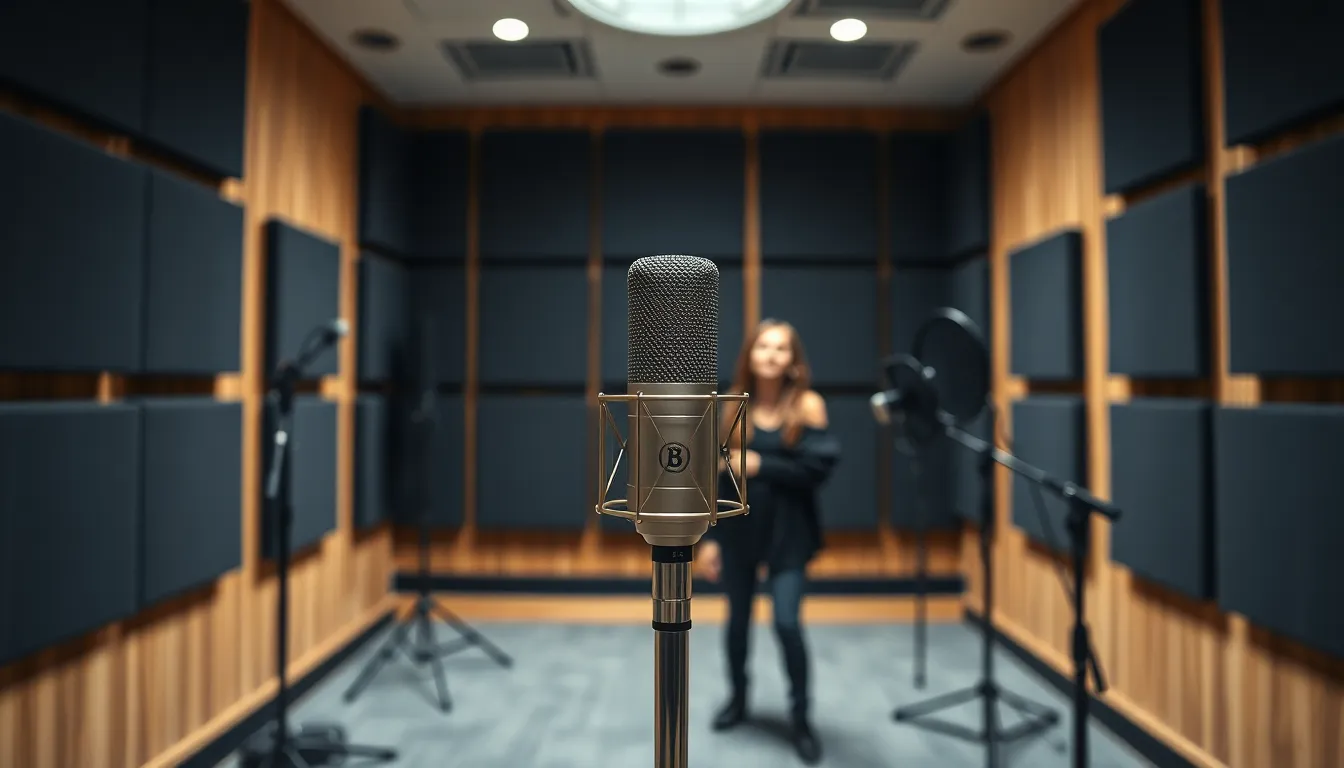In the world of audio recording, the figure-8 microphone is the unsung hero, capturing sound like a pro while maintaining an air of mystery. It’s not just another pretty face in the mic lineup; it’s a versatile tool that can elevate any recording session from mediocre to magnificent. Imagine a mic that listens to both sides of a conversation—like that friend who always knows the gossip.
Table of Contents
ToggleOverview of Figure-8 Mic Use
The figure-8 microphone, also known as a bi-directional microphone, captures sound equally from the front and back. This design makes it ideal for specific recording scenarios. Audio recording professionals frequently utilize it for duet vocals and interviews, allowing two sound sources to be captured distinctly.
Utilizing a figure-8 microphone in a studio setting produces rich, spatial recordings. This mic excels in environments with good acoustics, as it picks up ambient sound and adds depth to the recording. In live settings, capturing a performer and audience interaction enhances the overall experience.
Musicians put figure-8 mics to good use when recording stereo instruments. Arranging two instruments facing each other allows for a balanced sound, preserving the nuances of each performance. When positioned correctly, this mic type can minimize unwanted background noise while enhancing the primary sound source.
The figure-8 pattern makes it beneficial for podcasters and broadcasters seeking authentic conversations. Using two mics in a circle encourages natural dialogue, creating an engaging listening experience. Recording interviews with this mic nearly eliminates off-axis sound, focusing listeners on the interplay between the subjects.
When considering placement, positioning the microphone close to the sound source improves clarity. Maintaining equal distance from both sources ensures balanced audio levels. For optimal performance, acoustic treatment in the recording space contributes to achieving high-quality captures.
The figure-8 microphone stands out as a versatile tool suited for various audio recording applications. Understanding its unique capabilities leads to more creative and effective use, enhancing the overall sound quality.
Advantages of Figure-8 Microphones

Figure-8 microphones offer distinct advantages in audio recording, particularly due to their unique polar pattern. Their ability to capture sound from two sides enhances versatility in diverse recording situations.
Enhanced Sound Capture
Enhanced sound capture occurs when the figure-8 microphone picks up audio from both the front and rear. This characteristic makes it ideal for recording duet vocals or interviews, allowing harmonious blending of two voices. Musicians benefit from this feature as it captures stereo instruments effectively. Each performance nuance gets preserved with clarity and detail, which enriches the overall audio experience. Additionally, using this microphone in environments with controlled acoustics maximizes sound quality, ensuring that both sides contribute equally to the final mix.
Reduced Background Noise
Reduced background noise is another significant advantage of figure-8 microphones. They focus primarily on sound sources positioned in front and behind while minimizing side noise. By utilizing this polar pattern, ambient distractions are less likely to interfere with the recording. Podcasters and broadcasters appreciate this trait for its ability to foster authentic conversations. Isolating voices from unwanted environmental sounds enhances the listening experience, giving clarity to each spoken word. With proper placement, users can optimize this feature further to create professional-quality recordings.
Suitable Applications for Figure-8 Mic Use
Figure-8 microphones excel in various audio recording scenarios, offering unique properties that cater to specific needs.
Studio Recording
Figure-8 microphones shine in studio settings, especially when capturing duet vocals. This design allows each performer’s voice to blend harmoniously, creating a rich audio texture. The ability to capture sound from both the front and rear enables engineers to record ambient sound, enriching the overall mix. Musicians benefit from clear recordings of stereo instruments, as unwanted side noise gets minimized. Proper placement ensures the microphone effectively captures the nuances of each performance. Clear and focused sound is achievable by implementing acoustic treatment in the recording space.
Live Performances
In live settings, figure-8 microphones provide excellent sound isolation for performers. Capturing vocals and instruments from two sides reduces interference from stage noise, allowing for an immersive experience. This is particularly useful in ensemble performances, where multiple musicians share the stage. Enhanced clarity remains a priority, making it easier to deliver authentic audio experiences to the audience. Quick adjustments on the fly alongside strategic positioning help optimize sound capture during dynamic performances. Additionally, these microphones facilitate natural conversation flow in interviews or discussions.
Tips for Optimizing Figure-8 Mic Use
Effective use of a figure-8 microphone requires attention to placement and room acoustics. These factors greatly influence sound quality and clarity.
Placement Techniques
Careful positioning of the figure-8 microphone ensures optimal sound capture. Position the mic at mouth level for vocals and enhance clarity. Maintain a distance of about 6 to 12 inches from the sound source to avoid distortion. Angle the microphone toward the performers or instruments to focus on primary sound sources. Use a stand to stabilize the mic and prevent movement during recording. Consider employing one mic for multiple sources in duets or interviews; this approach captures balanced audio while minimizing unwanted noise.
Room Acoustics Considerations
Attention to room acoustics can enhance the performance of a figure-8 microphone. Use soft furnishings like curtains and carpets to absorb sound reflections. Enhancing acoustic treatment, such as foam panels or bass traps, contributes to clearer recordings. Select a quiet environment to minimize background distractions and improve the focus on intended sounds. Position the microphone away from reflective surfaces to reduce echoes and enhance audio quality. This setup maximizes the microphone’s polar pattern benefits, capturing sound from desired sources while isolating ambient noise effectively.
The figure-8 microphone stands out as a powerful tool in the audio recording landscape. Its unique polar pattern not only captures sound from both sides but also enhances the overall quality of recordings. By isolating voices and minimizing background noise, it proves invaluable for musicians, podcasters, and broadcasters alike.
Proper placement and attention to acoustic treatment are essential for maximizing its benefits. With the right techniques, users can achieve rich and clear audio that elevates their projects. Embracing the figure-8 microphone can lead to more engaging and professional-sounding recordings, making it a worthy addition to any audio toolkit.




